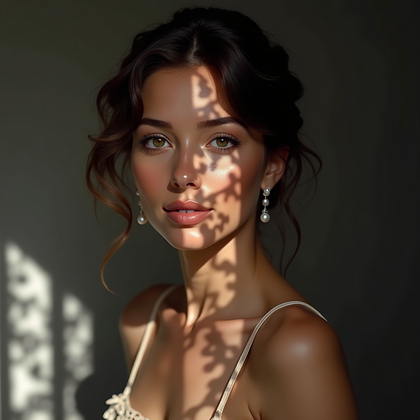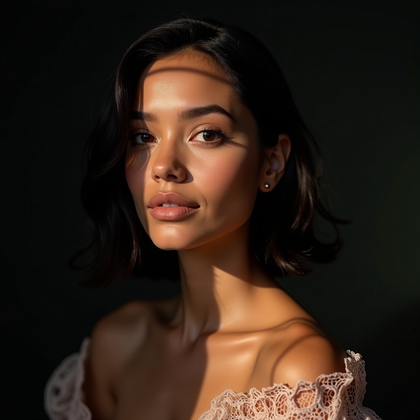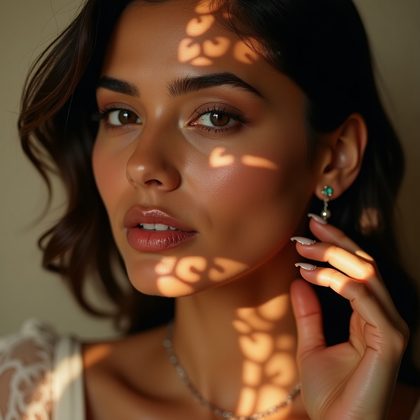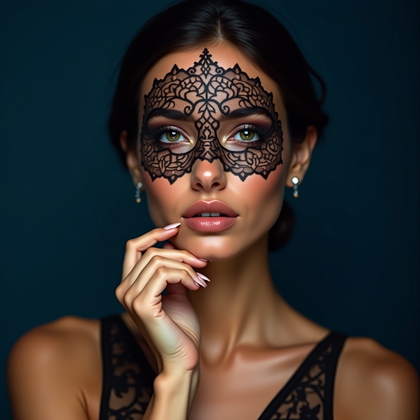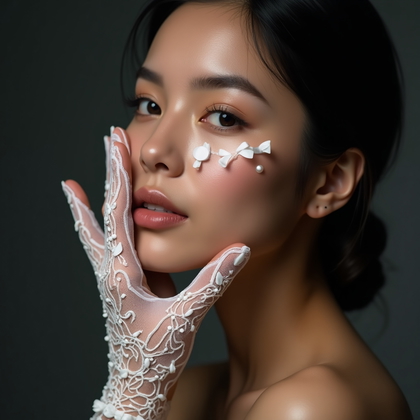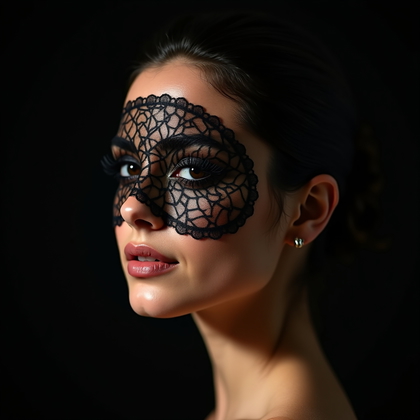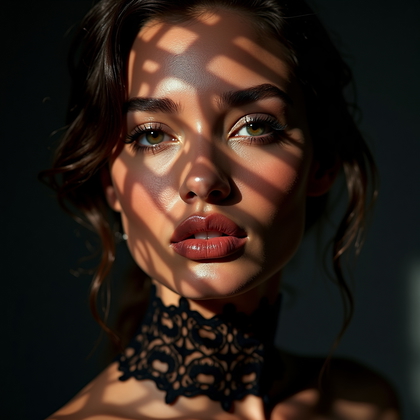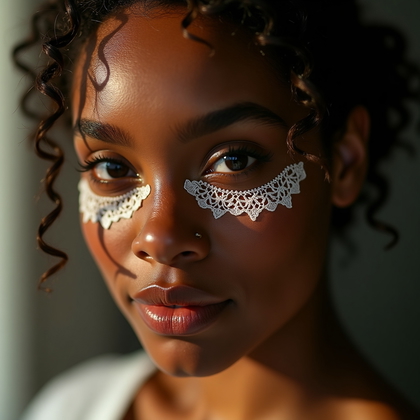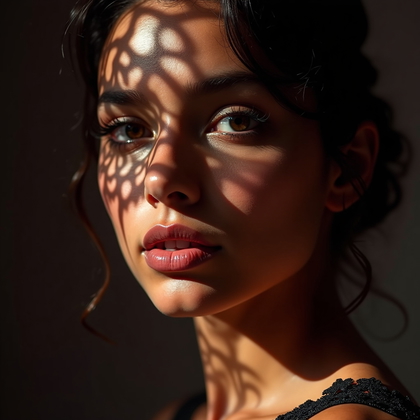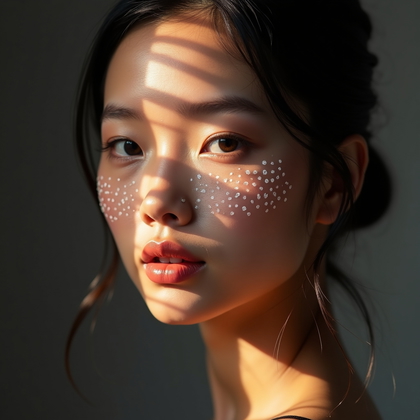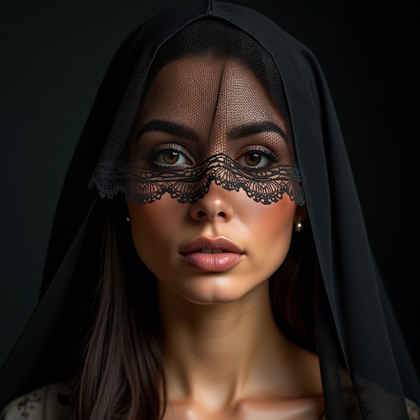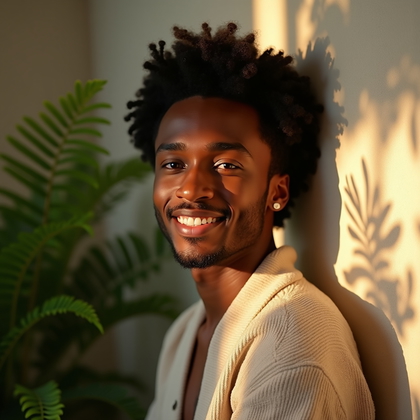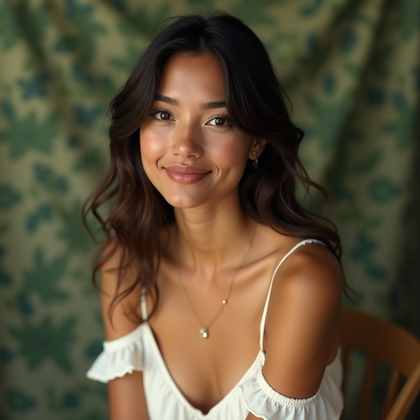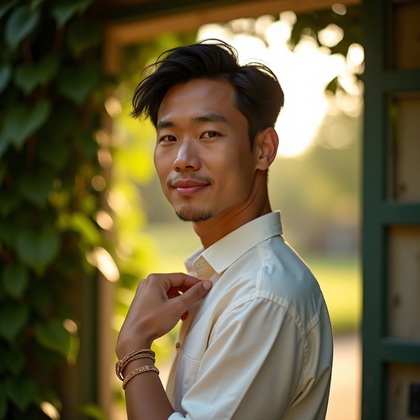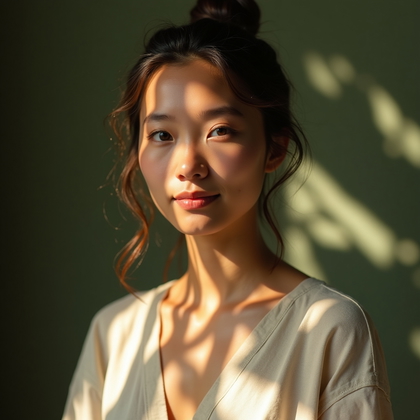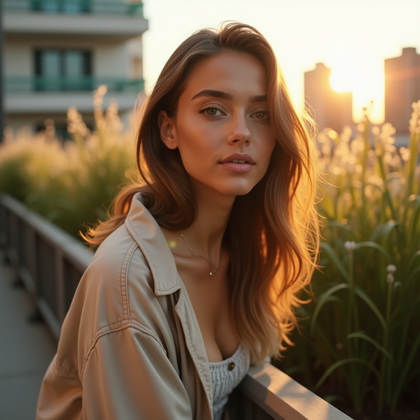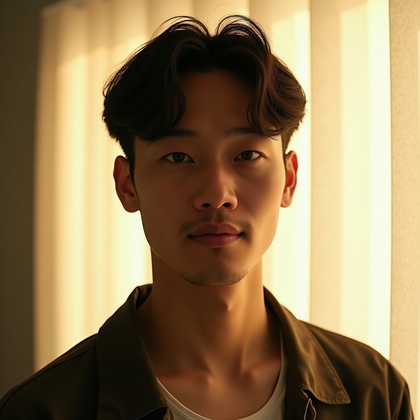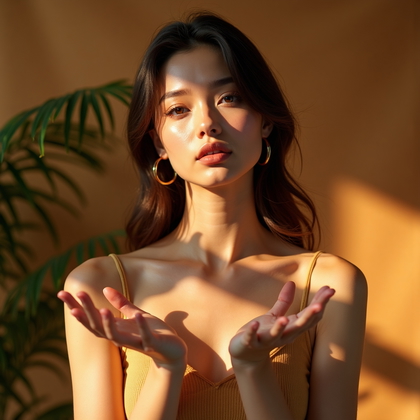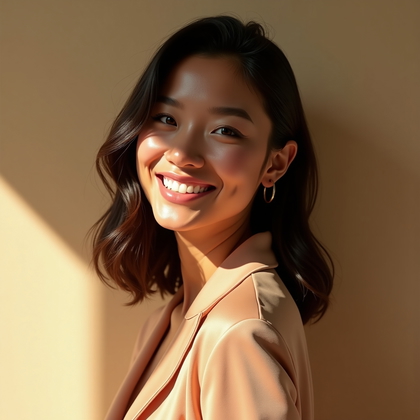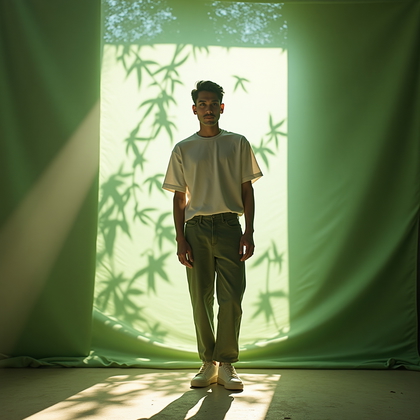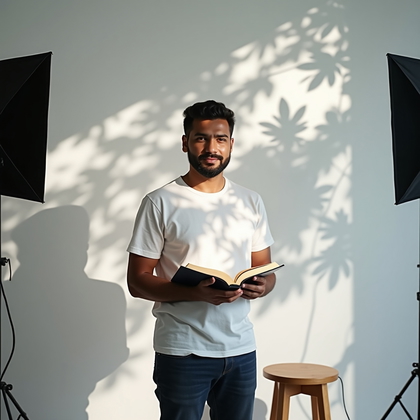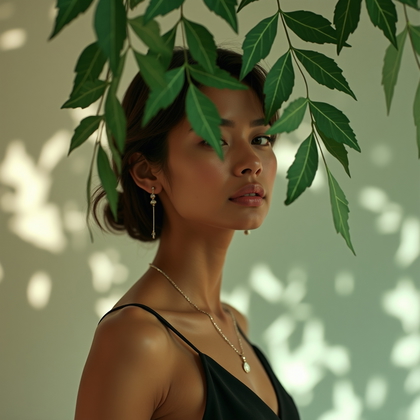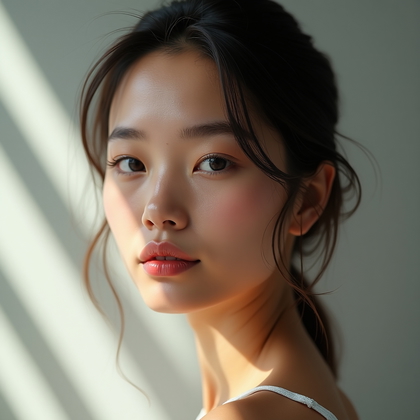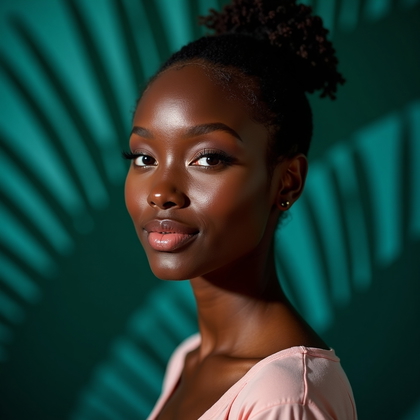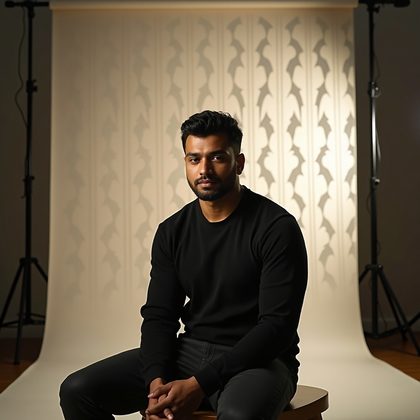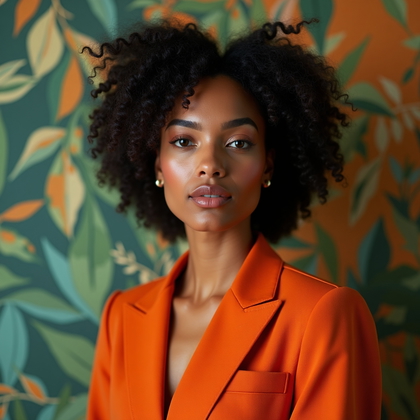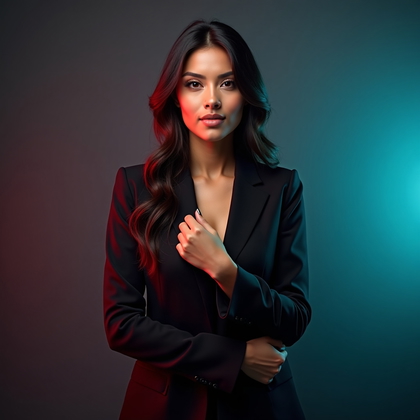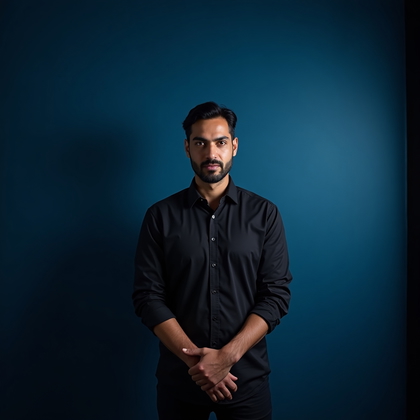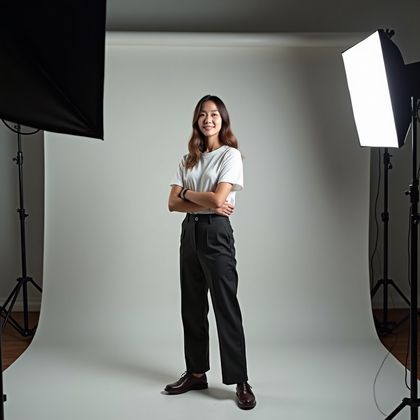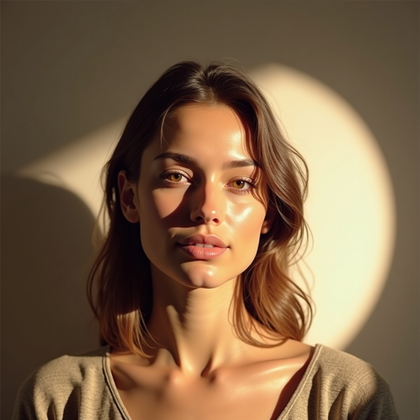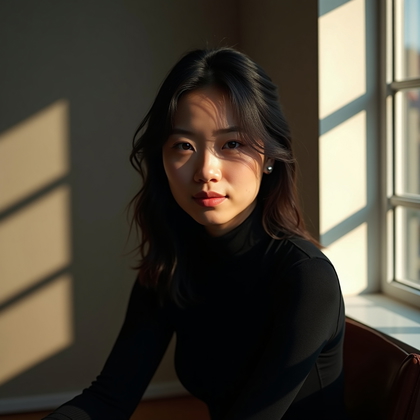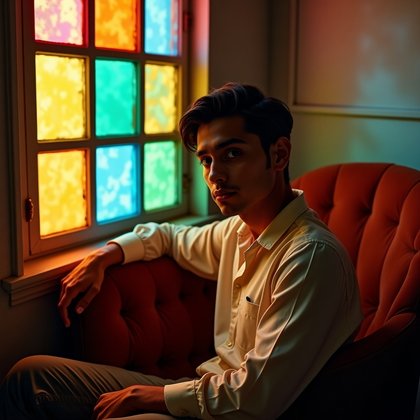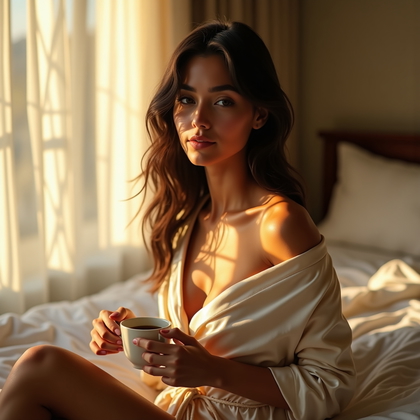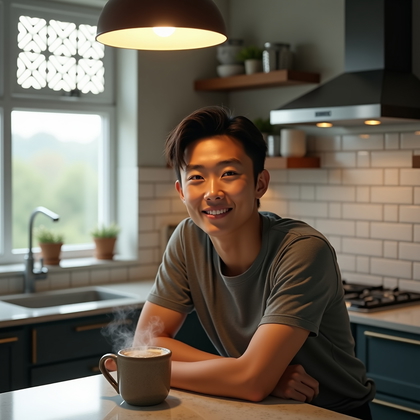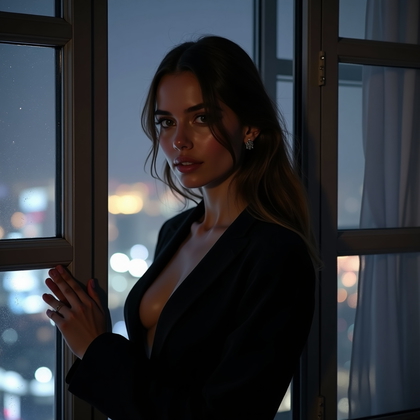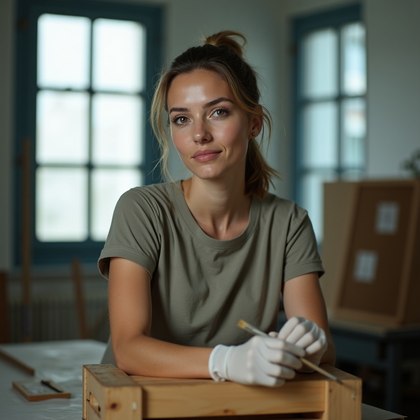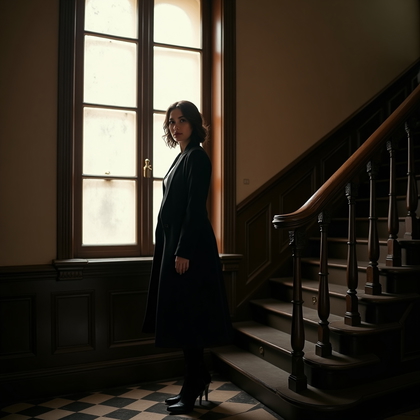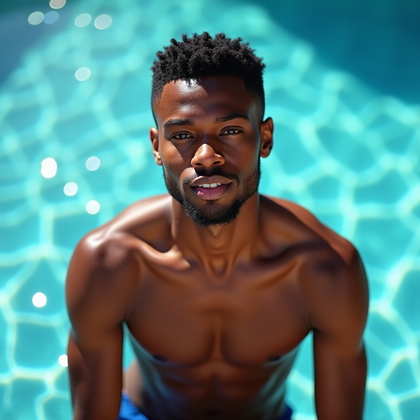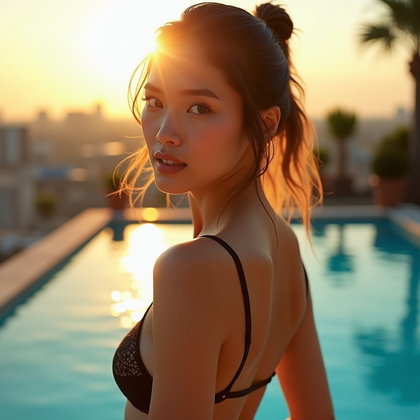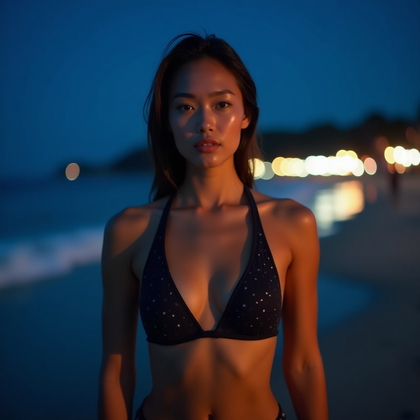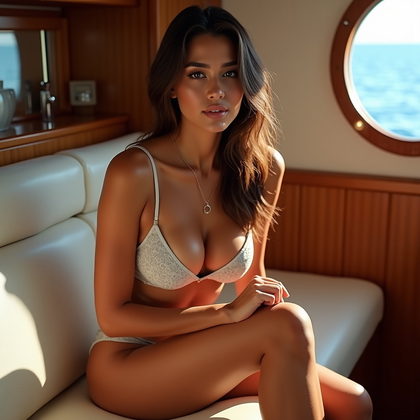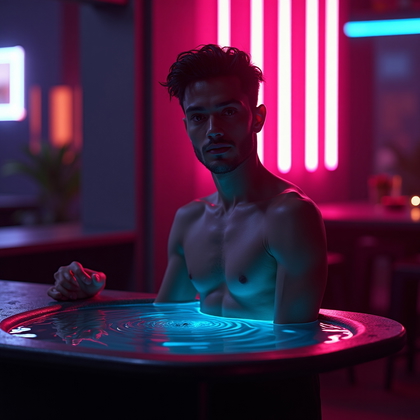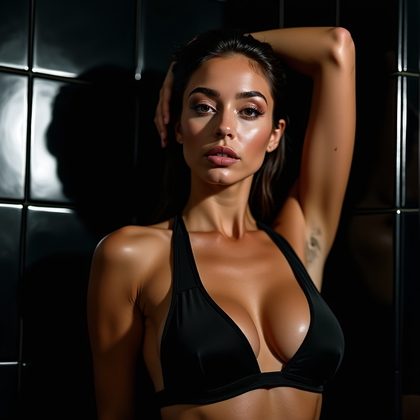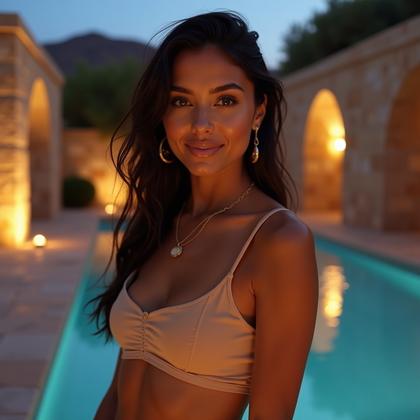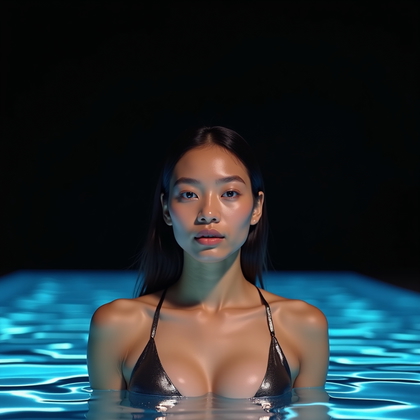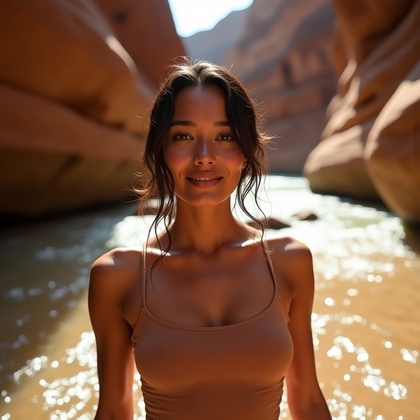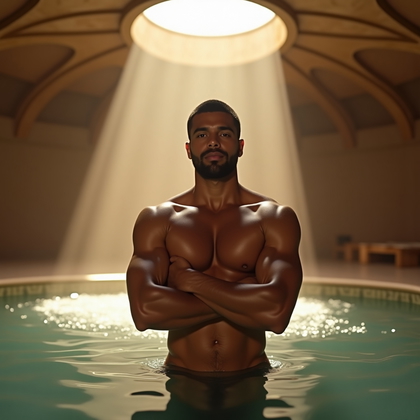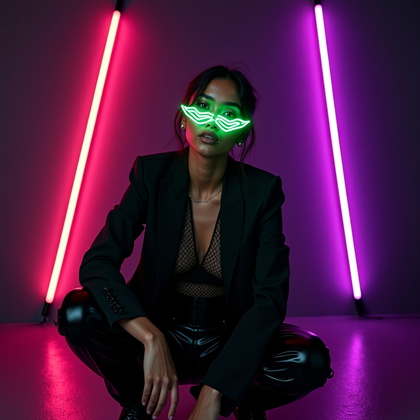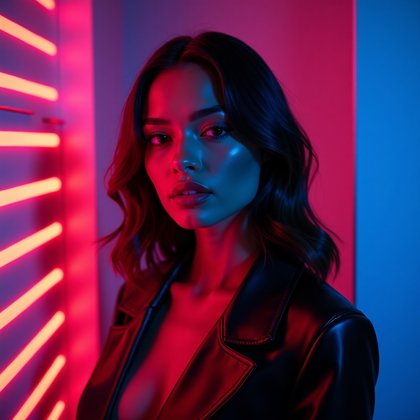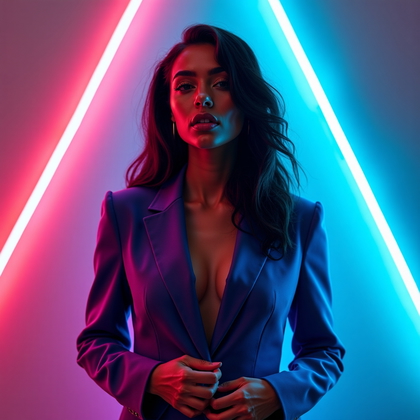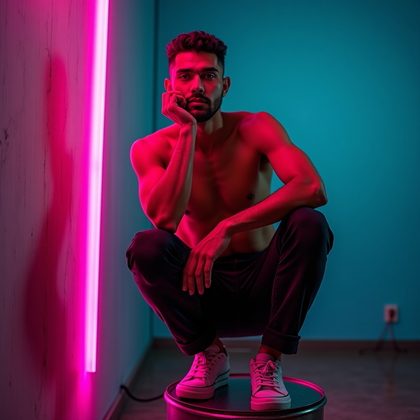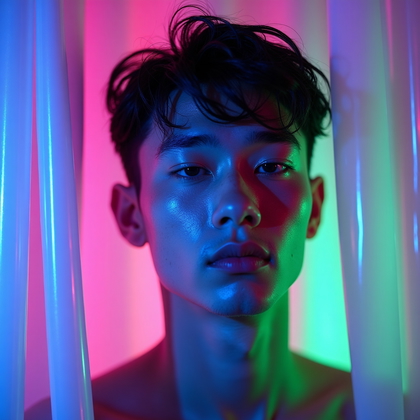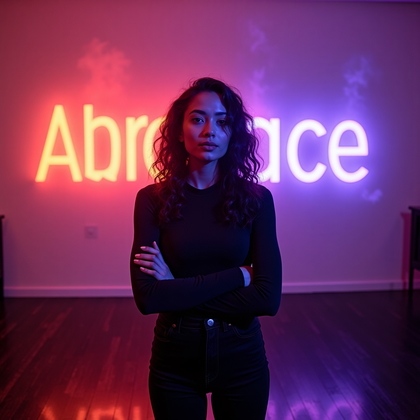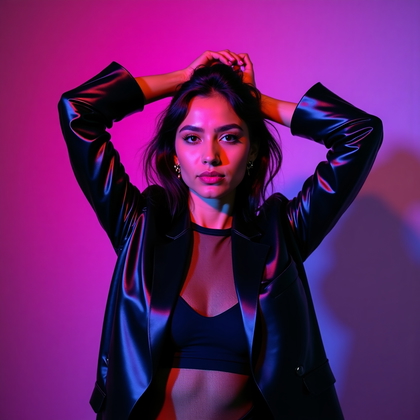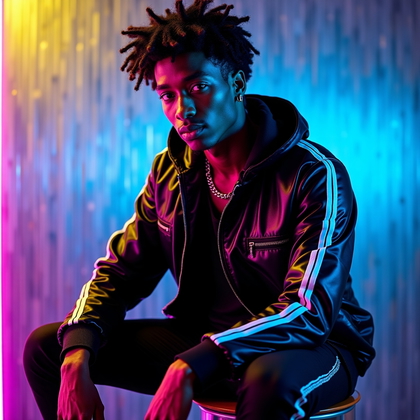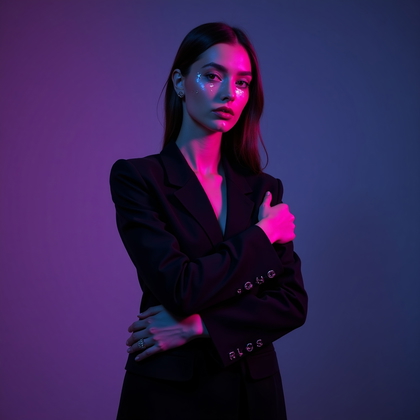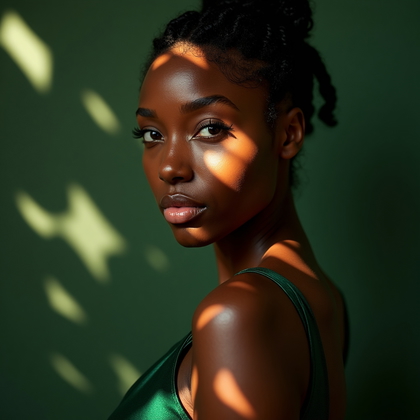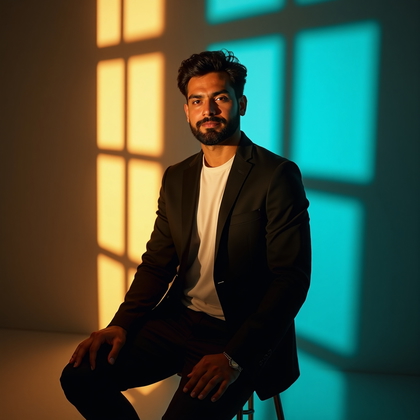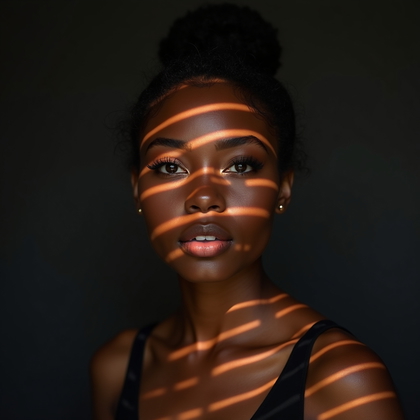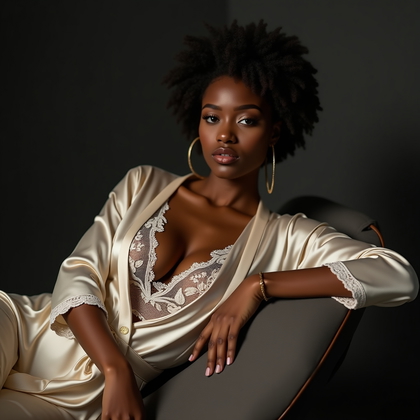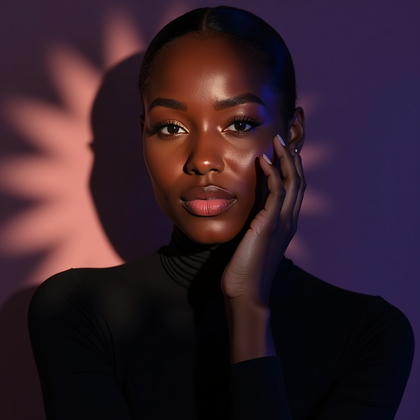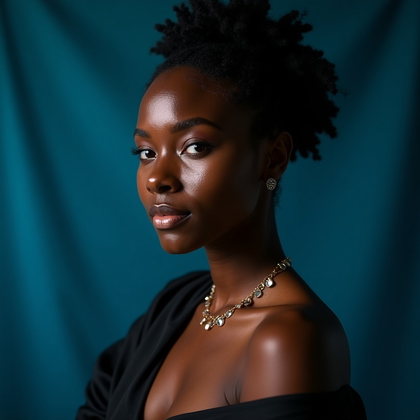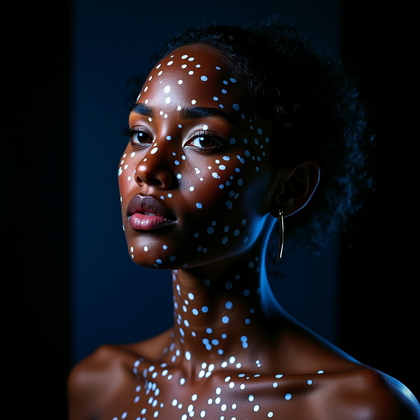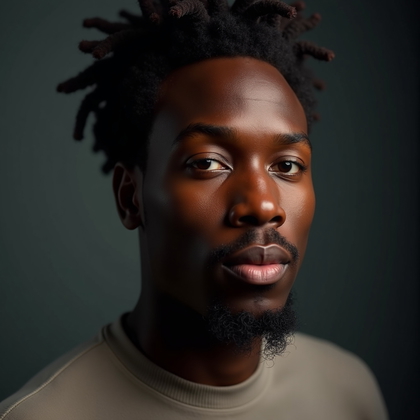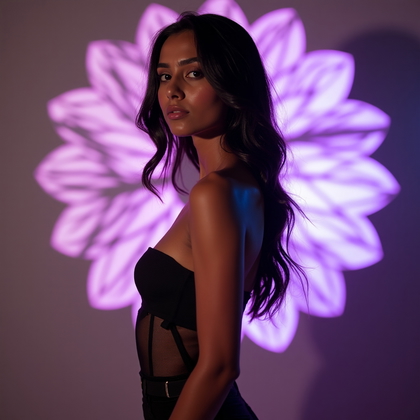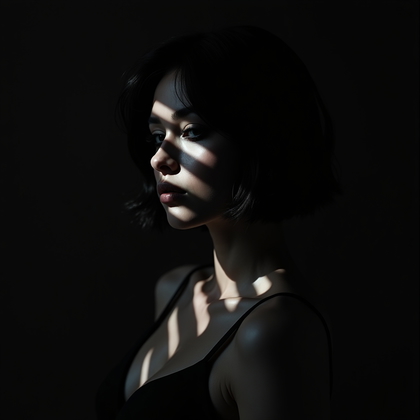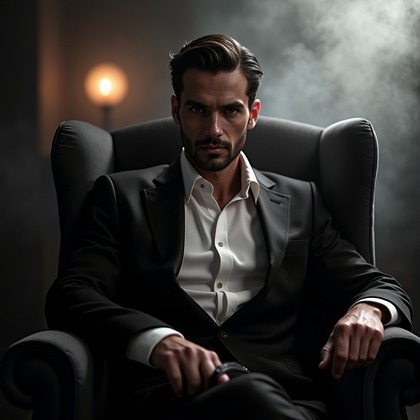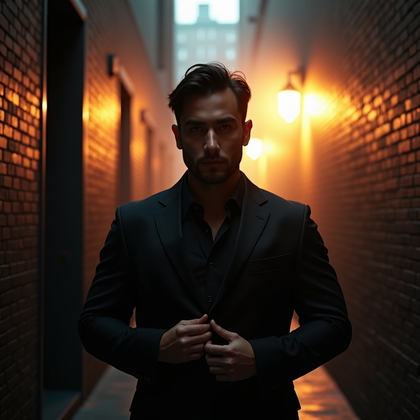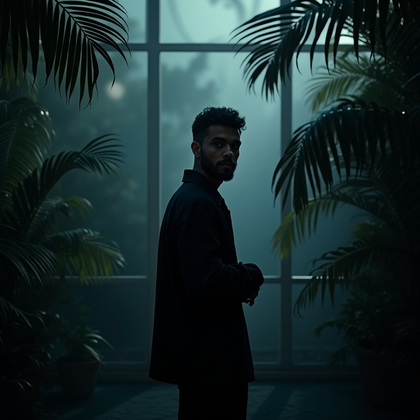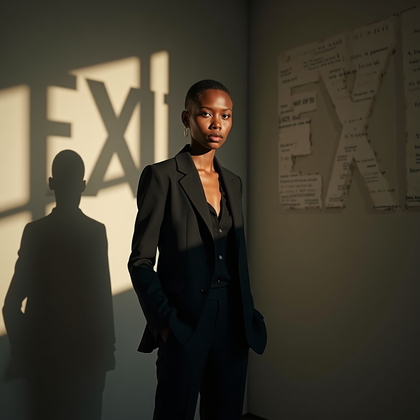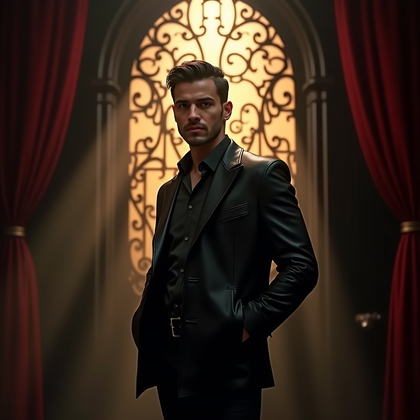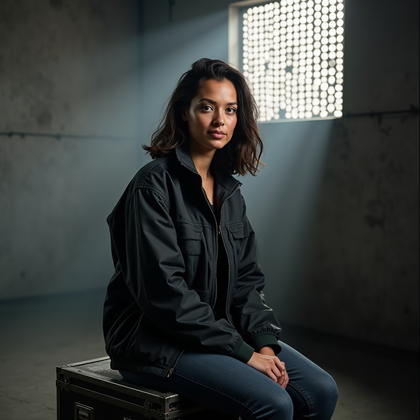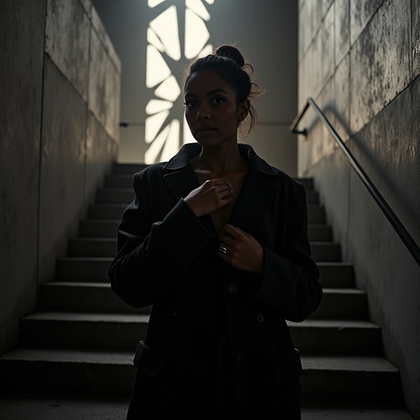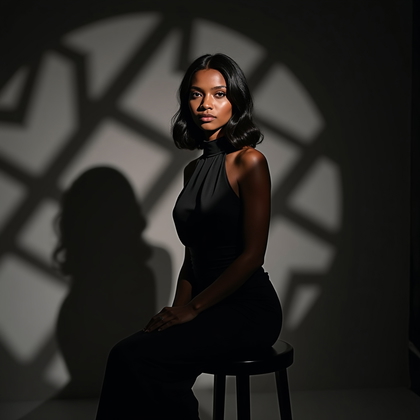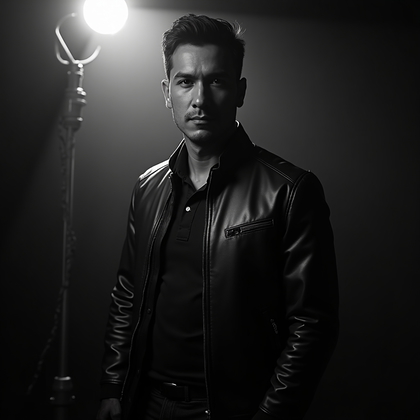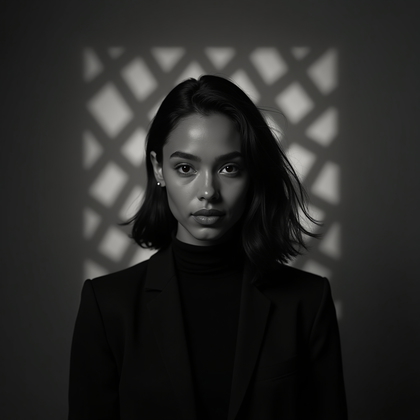Gobo Portrait Lighting Guide
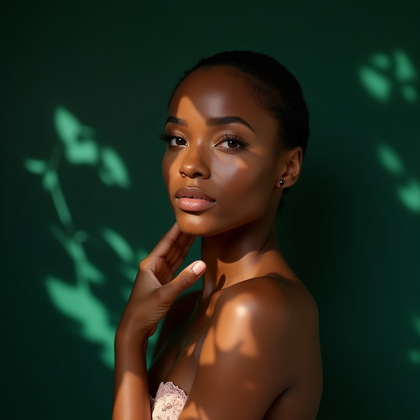
Want cinematic light patterns in your AI portraits? Tired of flat faces and fake sun? Ready to force the light to obey?
AI photo generation can mimic real studio gobos. A gobo is a pattern that shapes light. It sculpts faces, adds story, and drives attention. When you prompt it right, you get high-impact portraits that look intentional and expensive. No guesswork. No safe, boring light.
This guide shows what actually works. You get exact looks, clear setup tips, and strong prompts. Use them in any AI tool with text prompts, masks, or control nets. Push contrast. Control pattern scale. Keep the face clean when needed. Then add precision where it counts.
Lace Shadow Beauty Close-Up
Lace shadows carve cheekbones and lips. Fine patterns add luxury without heavy glam. The texture suggests detail, so the skin reads smooth. This is the cheat code for elegant beauty with real shape. Keep the pattern small. Aim from above at about 45 degrees. Let the lace fall across the cheeks and around the mouth. Avoid a hard stripe through the eyes. It looks rich when the shadow edges are crisp but not jagged.
In AI, prompt for “beauty close-up, fine lace shadow across face, delicate filigree gobo, soft skin detail, high micro-contrast, premium look.” Keep a clean key on the face plane and let lace land on the contours. Use a face mask or inpaint to remove stray blotches over the pupils. Add “shallow depth of field, 85mm close-up, soft specular highlights.” Negative prompt: “harsh grid, mask artifacts, warped pattern.” This setup sells elegance. It works fast.
Foliage Dapple “Sun Through Trees” Portrait
Leaf dapple fakes outdoor sun with style. The irregular pattern hides minor skin texture. It feels alive and editorial. The chaos looks intentional when the bright spots lead to the eyes and cheekbones. Use small, hard “sun” so the spots stay crisp. Keep the pattern medium scale. Too tiny looks noisy. Too large looks like random blobs.
In AI, use “sun through leaves, dappled light, crisp spots, outdoor energy, editorial portrait.” Add “hard directional light, warm white balance, shallow DOF, background blur.” Guide it with a foliage gobo or control net. Lock the brightest patch near the eyes. Negative prompt: “overcast, muddy light, soft blotches.” Push contrast. Let the skin glow in the light patches and fall off to shadow. This gives instant magazine feel.
Clean Key + Background Gobo Separation
Keep the face clean. Put the pattern on the backdrop. This gives depth without wrecking complexion or detail. It is pro-safe and works on any face. The subject stays flawless. The scene gets dimension. Use a soft key and a hard background gobo. Keep the subject a step off the wall to avoid spill and shadow merger.
In AI, prompt “clean soft key on face, patterned light on background only, studio separation, razor detail on skin, no face pattern.” Use a mask to protect the face and hair. Apply the gobo to the background layer. Add “subject 1–2m from wall, controlled falloff.” Negative prompt: “face shadows from pattern, messy spill.” This setup is reliable for headshots, beauty, and product with people. It simply works.
Window Frame Narrative Portrait
Window bars add story and direction. Bold shapes create depth and tension. Park the eyes in the brightest pane so they own the frame. Let the bars cut the body or background, not the iris. Keep edges crisp. Angle the bars to point into the face. This pulls the viewer to the subject fast.
In AI, use “hard window-frame light, bar shadows, eyes in bright pane, high contrast, cinematic mood.” Add “rectangular slats, directional sun, deep falloff, 35–85mm portrait.” Control with a window gobo or shadow mask. Place the brightest patch across the eyes and upper cheeks. Negative prompt: “soft mushy slats, bar crossing pupil, uneven exposure.” This is narrative power with minimal cleanup.
Water-Ripple Skin Contour (Swimwear/Shoulders)
Ripple light mimics pool reflections. It sculpts shoulders, collarbones, and jawlines. Skin looks alive and dimensional. It feels summery and sensual without heavy retouch. Keep the ripple small to medium scale. Aim for sharp caustic edges with soft fade. Avoid full-face coverage. Let it play on the body and edges of the face only.
In AI, prompt “sunlit water caustics, ripple light on skin, glossy highlights, summer mood, clean speculars.” Add “hard top light as sun, cool-warm color mix, wet skin micro-sheen, 50–85mm.” Guide with a ripple gobo or displacement mask. Negative prompt: “plastic wet look, muddy streaks, fake waves on eyes.” This look stops the scroll because it feels real.
Color-Gelled Gobo for Neon Editorial
Colored patterns on face and shoulders hit hard. Cyan, magenta, or red-blue splits create modern punch. High contrast and unapologetic color make the subject pop. Use complementary or split-complementary pairs. Keep one color dominant. Use the second color as an accent or rim.
In AI, use “neon editorial, color-gelled gobo, cyan-magenta split, hard patterned light, glossy skin, crisp edges.” Add “clean white balance, deep blacks, saturated midtones.” Map color by side: “cyan from left, magenta pattern from right.” Use a face mask to protect eyes and teeth from weird tints. Negative prompt: “muddy color mix, low saturation, banding.” This is reliable click bait because it reads loud and clean.
Pattern-on-Dark Skin Brilliance
Put light where it counts. Hit the high planes: cheekbones, forehead ridge, nose bridge, shoulders, clavicle. Avoid mid-face spill. This creates luminous contrast that celebrates tone. Large, clean shapes read best. Fine noise can break up and dull the glow.
In AI, prompt “dramatic highlights on high planes, rich dark skin tone, controlled spill, patterned light accent, deep contrast.” Add “low fill, soft negative fill on shadow side, glossy micro-sheen.” Use masks to keep pattern off mid-face and under-eye area. Place the brightest shape on the cheekbone, not the center of the face. Negative prompt: “flat lighting, haze over skin, noisy grain.” This setup honors depth and color while staying bold.
High-Contrast Noir with Haze
A little haze makes light visible. Beams appear. Slats turn into volume. This is how you get big-time mood. Use hard blinds or narrow slits. Keep backgrounds dark. Let the haze reveal the path of the light, not fill the room with fog.
In AI, use “noir portrait, volumetric light, subtle haze, hard blinds gobo, deep blacks, sharp highlights.” Add “rim light kiss, low key exposure, rich texture.” Keep haze light so the subject stays crisp. Guide the brightest beam toward the face edge or eye line. Negative prompt: “heavy fog, low contrast, milky blacks.” This gives instant cinema with minimal effort.
Conclusion: Make Light Do What You Want
Gobos shape light. Light shapes faces and stories. You now have eight proven setups that work in AI without fuss. Use small, hard sources for crisp edges. Control pattern scale so it reads. Keep faces clean when needed. Aim the brightest patch at the eyes or cheekbones. Protect key areas with masks or inpainting.
Lock a seed, test angles, and change only one thing at a time. Push contrast until it sings, then stop. That is how you get portraits that look intentional, expensive, and alive. Use these patterns. Own the frame.
